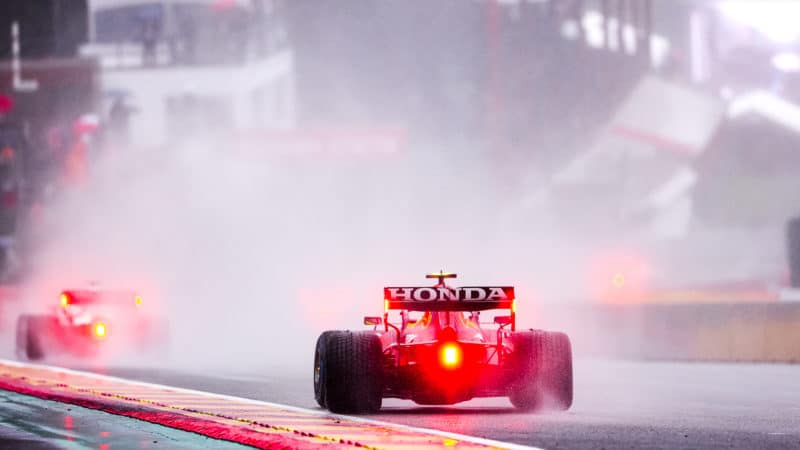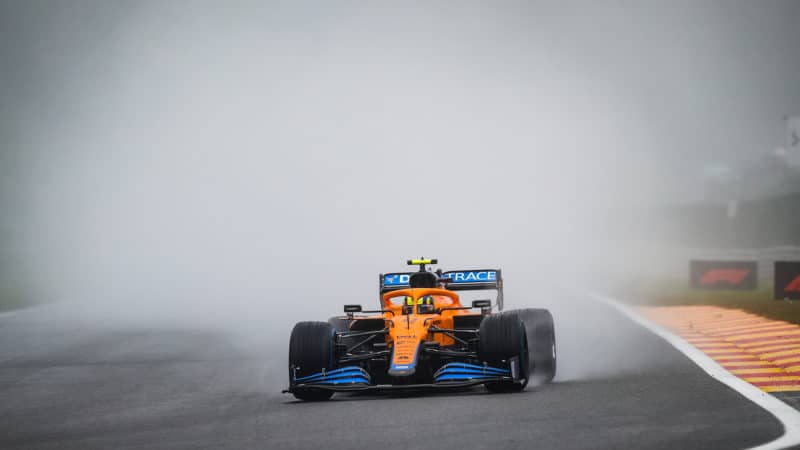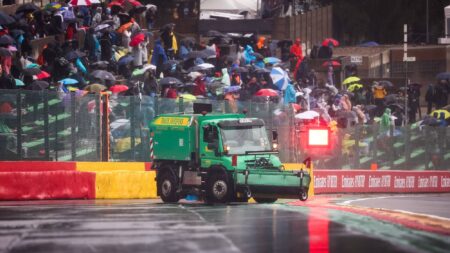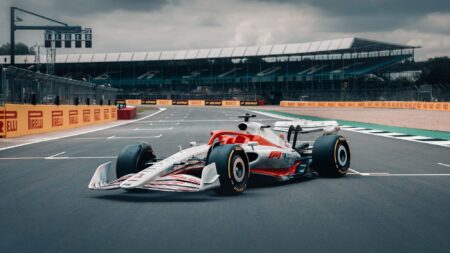But it’s something else that Sainz said that really stood out to me as a smart explanation for what we saw on Sunday, and it’s something we need to think about but hopefully are already set to improve in future. Why is it that visibility is so bad that F1 cars can’t run in a race situation like that?
“Unfortunately the diffusers are huge, the tyres are very big, and there was quite a lot of standing water. One by one, we could have done a Super Pole, for example, no problem. We could have gone through Eau Rouge, this was not the issue.
“The issue was visibility, and in the two laps I did behind the safety car the tyres cooled down basically to zero and you were going into Eau Rouge and into that straight with zero visibility. If someone spins in front of you, on cold tyres, I’m telling you that if P10 crashes, then everyone up to P20 will hit him. That’s where a big accident, at 300km/h (186mph), can happen.”
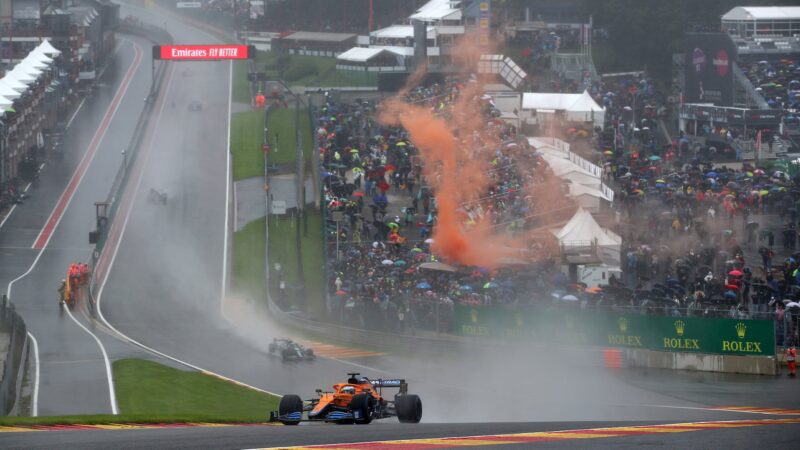
Sainz says high-speed Eau Rouge section was too risky in the wet weather
Joe Portlock/F1 via Getty Images
Wet weather does make accidents more likely to happen, but drivers enjoy the fact it provides them with an opportunity to showcase their skills. They’re so competitive and self-confident, they believe it will be someone else making the error and they will be the one to benefit. As long as they can see.
No amount of self-confidence can overcome pure physics, and if you don’t see a car in front of you until you are 10 metres away from it and doing any sort of speed, there’s no avoiding a huge crash. And as we’ve seen at Spa in the past, when one car hits a stationary one, the worst outcome is certainly possible.
So often the past is used as a stick to beat F1 with when it won’t run in the wet, saying we’ve run in worse conditions. That’s true, we have, because the cars were different. In the ‘good old days’ of the 50s, 60s and even into the 70s there was little in the way of aerodynamics creating serious levels of downforce, and at times there were smaller tyres, too.
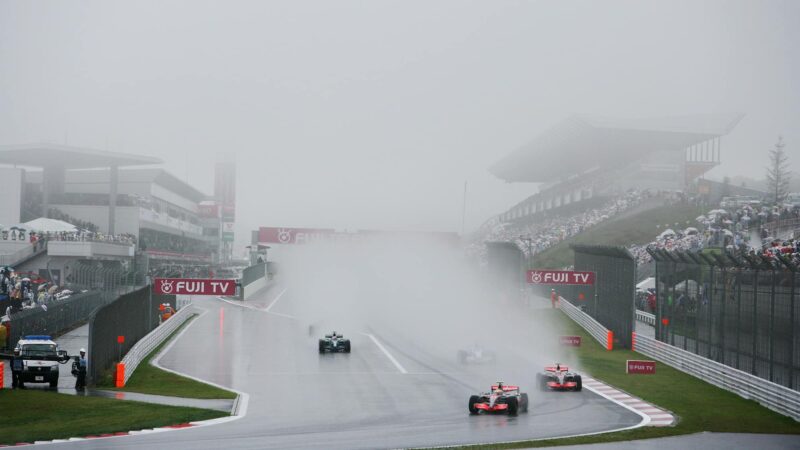
F1 raced under a Fuji deluge in 2007. But the pace was much slower
Mark Thompson/Getty Images
Even as aero really came into the sport, its effect was so much less than it is today. One clip doing the rounds after Sunday was of Felipe Massa and Robert Kubica having a hell of a scrap in torrential conditions in Fuji, some 14 years ago. Those 2007 cars lapped the same Spa-Francorchamps layout in 1min 46sec in the dry with low fuel. Pole there last year was a full five seconds quicker.
Five seconds.
Think of how advanced F1 seemed in 2008, the aerodynamics were immense and had to be trimmed right back the following year as regulations changed to slow the cars. To be five seconds quicker now – achieved partly through power unit performance but mainly aero – is another category.
And that creates a massive wake in terms of disturbed air behind the car, so much so that it’s tough to follow in the dry given the performance loss for the car in tow. On a wet track where standing water has been flicked up by the wide tyres – much wider than F3 and without wheel arches to keep spray down like in Porsche Supercup, both of which ran on Sunday morning – that water is then thrown even further by the turbulent air behind, creating the wall of spray that is so hard to see through.
